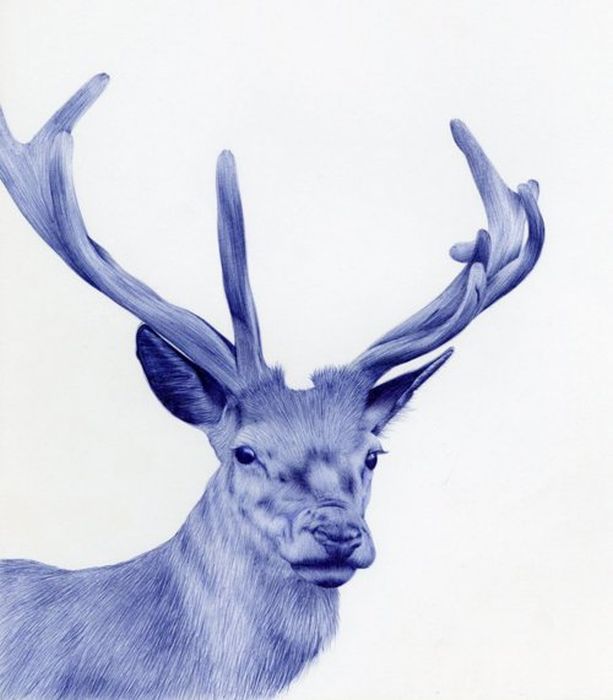Pen Drawing
|
Blending uses an implement to soften or spread the original drawing strokes. Blending is most easily done with a medium that does not immediately fix itself, such as graphite, chalk, or charcoal, although freshly applied ink can be smudged, wet or dry, for some effects. For shading and blending, the artist can use a blending stump, tissue, a kneaded eraser, a fingertip, or any combination of them. A piece of chamois is useful for creating smooth textures, and for removing material to lighten the tone. Continuous tone can be achieved with graphite on a smooth surface without blending, but the technique is laborious, involving small circular or oval strokes with a somewhat blunt point.
Shading techniques that also introduce texture to the drawing include hatching and stippling. There are a number of other methods for producing texture in the picture: in addition to choosing a suitable paper, the type of drawing material and the drawing technique will result in different textures. Texture can be made to appear more realistic when it is drawn next to a contrasting texture; a coarse texture will be more obvious when placed next to a smoothly blended area. A similar effect can be achieved by drawing different tones close together; a light edge next to a dark background will stand out to the eye, and almost appear to float above the surface.
The composition of the image is an important element in producing an interesting work of artistic merit. The artist plans the placement of elements in the art in order to communicate ideas and feelings with the viewer. The composition can determine the focus of the art, and result in a harmonious whole that is aesthetically appealing and stimulating.
|
|















